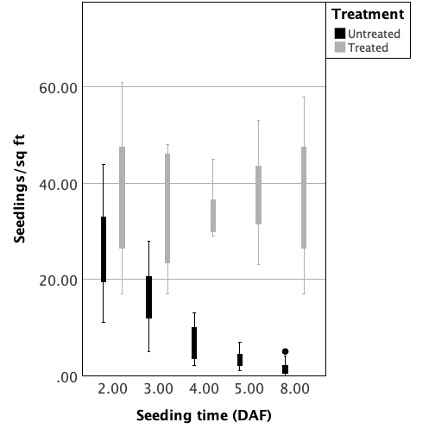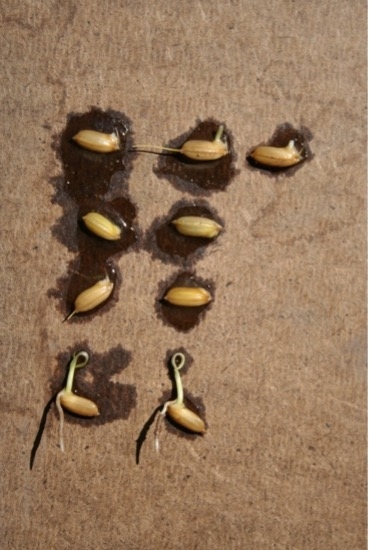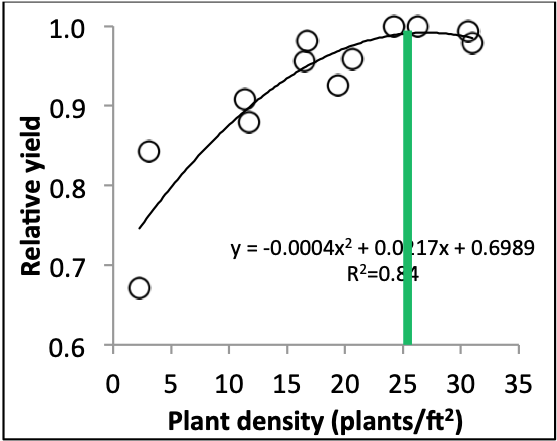I received several calls and comments about issues with tadpole shrimp this spring. While this pest is well known to growers and PCAs, it can still be difficult to manage during planting time. Mistiming of insecticide application can result in shrimp damage. Tadpole shrimp develop fast, and really fast when it is warm. This spring was warmer than last year during mid to late May, when most of the rice was being flooded and planted. If a field takes long to flood and seed, the shrimp have more time to develop and may injure seedlings as soon as they start germinating in the field. What shrimp size can injure rice? If you can see the shrimp, they can injure rice. However, larger shrimp will cause more injury than smaller shrimp. The figure below shows how, in a field infested with TPS, the stand is reduced more the later the field is seeded after flood (DAF).
Some of the fields where shrimp injury occurred this year are fields where pyrethriods do not control shrimp anymore. In these fields, Dimilin is working well. However, remember that Dimilin may take a few days longer to clear up the shrimp than pyrethroids and copper, especially when the shrimp are large.
When shrimp injury occurs soon after seeding, they will feed on the emerging coleoptile and radicle, completely consuming these tissues. When this happens, seeds won't recover. If only some of the tissue is consumed, seedlings may be able to continue growing once the shrimp is controlled. The picture below shows seedlings where the coleoptile and radicle have been consumed compared to two uninjured seedlings at the bottom of the picture.
If a field is damaged by tadpole shrimp, reseeding is an option. Some trials conducted a couple of years ago by Bruce Linquist showed that the optimum stand is about 25 plants/ft2. Rice plants can compensate when the stand is reduced. For example, when the stand is reduced to 12.5 plants/ft2 (half the optimum), yield is reduced only 10%. In general, reseeding should be considered when the stand is reduced to 10 plants/ft2 or less. Draining the field before reseeding increases the likelihood of establishment of the reseed, but it may not be possible in all cases. When reseeding, use a higher seeding rate to increase the chances of establishment and make sure the shrimp have been controlled. As a grower told me a few years ago, remember that reseeding is a bit of a gamble.


